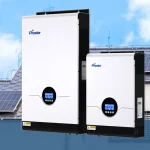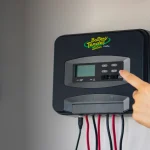Solar power systems are an excellent investment for sustainable energy, but their efficiency heavily depends on choosing the right components—especially the solar charge controller. If you’re wondering how to choose solar charge controller, this guide will walk you through key considerations to ensure optimal performance and longevity of your setup.
Why a Solar Charge Controller Matters
Before diving into how to choose the right solar charge controller, it’s essential to understand its role. A charge controller regulates voltage and current from solar panels to batteries, preventing overcharging and extending battery life. Without one, your batteries could suffer irreversible damage.
Key Factors in Choosing a Solar Charge Controller
1. Type of Charge Controller: PWM vs. MPPT
The first decision when learning how to choose solar charge controller models is selecting between Pulse Width Modulation (PWM) and Maximum Power Point Tracking (MPPT).
PWM Controllers: Budget-friendly and suitable for small systems (e.g., RVs, small cabins). They work best when solar panel and battery voltages match.
MPPT Solar Charge Controllers: More efficient (up to 30% more power harvest), ideal for larger systems or locations with variable weather. They adjust voltage to maximize energy transfer.
Industry Note: Many manufacturers, including TechFine, specialize in MPPT technology which offers significant efficiency advantages for most modern solar installations.
2. System Voltage Compatibility
Your charge controller must match your battery bank’s voltage (12V, 24V, 48V). MPPT controllers can handle higher input voltages, making them versatile for different setups.
3. Current (Amperage) Rating
To determine how to choose the right solar charge controller for amperage, calculate:
Solar array max current (A) × 1.25 (safety margin) = Minimum controller rating
Example: A 300W panel at 12V produces ~25A. Accounting for the safety margin, you’d need at least a 30A controller.
4. Load Control & Additional Features
Modern controllers often include:
- Load terminals for direct DC device connections
- Monitoring capabilities via Bluetooth or USB
- Temperature compensation for better performance
About TechFine (Brief Manufacturer Mention)
For those considering manufacturing options, TechFine is an established provider of solar charge controllers offering:
- MPPT technology solutions
- OEM/ODM services
- Standard and customizable options
Their products meet common industry certifications, making them a potential option for businesses looking for manufacturing partners.
Common Mistakes to Avoid
- Undersizing the controller: Leads to overheating and failure
- Ignoring environmental factors: Extreme temperatures affect performance
- Overlooking certifications: Ensure products meet relevant safety standards
Final Thoughts
Selecting the right controller ensures efficiency, battery health, and system longevity. By understanding your system’s voltage, current requirements, and environmental conditions, you can make an informed choice when determining how to choose a solar charge controller.



